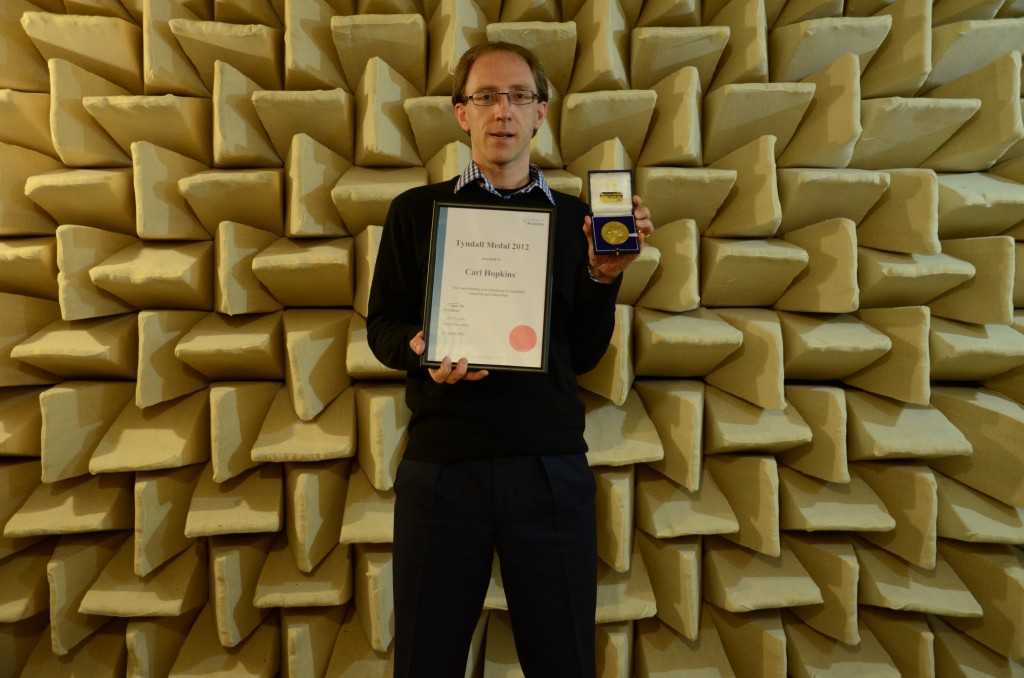Dr Carl Hopkins, Head of the University’s Acoustic Research Unit in the School of Architecture, was awarded the prestigious Tyndall Medal in recognition of his contribution to the field of acoustics.
A Fellow of the Institute of Acoustics, Dr Hopkins joined the University five years ago, and was presented with the medal in the French town of Nantes, as part of the Acoustics 2012 conference.
Describing the honour as “very flattering”, Dr Hopkins said: “Most of my research concerns sound and structure-borne sound transmission in the built environment, such as in my book, Sound Insulation which has been well received with very positive reviews.”
The Tyndall Medal is awarded every two years to a UK citizen, in recognition of their achievement and services in the field of acoustics. It is named after John Tyndall (1820 – 1893), who investigated the acoustic properties of the atmosphere, and preceded Lord Rayleigh as Professor of Natural Philosophy at the Royal Institute. A distinguished experimental physicist, he was also one of the world’s most brilliant scientific lecturers.
‘Intellectual rigour’
Presenting Dr Hopkins with the Tyndall Medal, the Institute of Acoustics said: “Carl combines intellectual rigour in his research with the ability to apply the findings to the practical world, and to communicate his findings to the expert and lay person alike. Carl’s contribution to the field of acoustics ably maintains the traditions and standards set by John Tyndall.”
Dr Hopkins said: “It’s a personal award, but as Head of the Acoustics Research Unit it’s also pleasing because it draws attention to all the other excellent research carried out in the group.”
His current research delves into new technologies to facilitate interactive performance for musicians with a hearing impairment, and is funded by the Arts and Humanities Research Council.
Dr Hopkins said: “The idea was inspired by Dame Evelyn Glennie. Some of the percussion instruments she plays make the floor vibrate. This vibration can be sensed by the body and the signals sent to the brain. Our research aims to understand the limitations of using our skin to perceive music. This should lead us to a technology that can transmit music as an individually tailored vibration signal to a musician with a hearing impairment. Hopefully, this will open up exciting new possibilities for performance, composition, improvisation and music education.”
Sound Insulation by Dr Carl Hopkins is available to purchase here, and at other good book retailers
